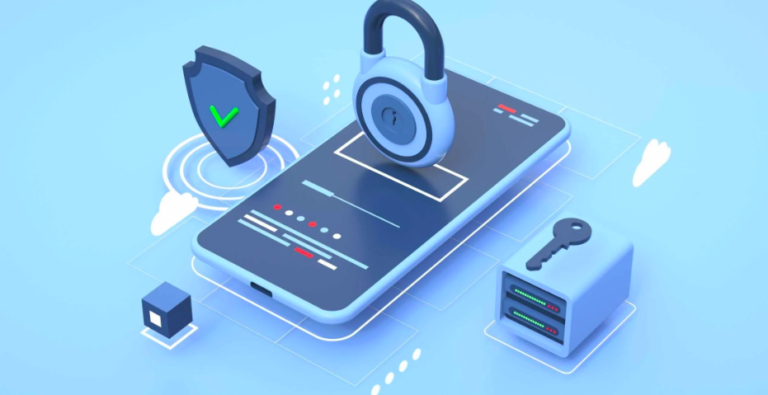Their daily lives are now significantly impacted by mobile applications. Apps are utilized for almost all digital interactions, including social media, banking, retail, and healthcare. However, there is a higher chance of security vulnerabilities in tandem with this growing reliance on mobile apps. Mobile applications are frequently the main target of cyberattacks, particularly those that handle sensitive data like financial or personal information. Businesses and app developers must ensure their apps are safe to mitigate these dangers. To improve mobile security, app shielding is the main emphasis of technologies like AppSealing.
Mobile Applications Face Increasing Danger
It’s important to comprehend why mobile app security is so important before delving into how AppSealing and App Shielding operate. Threats to mobile apps are manifold; they include malware injections, illegal access, code tampering, reverse engineering, and data leaks, among other things. Hackers frequently take advantage of holes in program coding or use unsafe networks to capture data.
The dangers are greater than ever because mobile apps are increasingly being used for sensitive operations like digital payments and mobile banking. In addition to affecting the user’s data, a compromised app can harm the credibility and reputation of the company that made it. Therefore, a non-negotiable component of developing mobile apps nowadays is guaranteeing strong app security.
Understanding App Shielding and App Sealing
Without wanting builders to make any code changes, AppSealing is a cloud-based totally cellular application safety answer that focuses on defensive cell apps from numerous cyber threats. It offers immediate defense against hostile activity, tampering, reverse engineering, and data leaks. One of the mainstays of AppSealing’s security strategy is app shielding, a collection of technologies created to strengthen the code and execution environment of mobile apps to defend them against outside attacks.
The Operation of App Shielding via AppSealing
To offer complete protection for mobile applications, AppSealing’s app shielding functions on several levels. The first step in the technique is to comprise safety functions into the software. The fact that AppSealing eliminates the need for substantial code modifications on the part of developers is one of its main benefits. Rather, AppSealing’s cloud-based solution makes it simple for them to incorporate security features, which simplifies the process for development teams.
Runtime protection is an additional crucial component of program shielding. When an app is running on a user’s device, it is most susceptible. Attackers may now try to alter the application or insert malicious code. By continuously scanning the program’s execution environment for unusual activities, AppSealing’s app shielding stops this. The program can take necessary action, such as shutting down or prohibiting unauthorized actions if any tampering is discovered. Even after the software has been installed on the user’s device, real-time monitoring makes sure it stays safe.
Encryption is also a key component of app shielding. App shielding adds an extra degree of protection for both the app and its users by using encryption that complies with the strictest security requirements.
AppSealing’s Function in Guarding Against Reverse Engineering
Reverse engineering is one of the biggest risks to mobile apps. Deconstructing the app’s code is part of this process to find out about its functionality, organization, and weaknesses. Hackers frequently utilize reverse engineering to modify apps, insert malware, or identify vulnerabilities that they may take advantage of. By making it extremely difficult for attackers to analyze the app’s code, AppSealing’s app shielding is specifically made to thwart attempts at reverse engineering.
The app’s code is jumbled by AppSealing’s state-of-the-art code obfuscation strategies, making it nearly difficult to study or recognise.This safeguards intellectual property and guarantees that the app’s functioning is unaltered by stopping hackers from reverse engineering the application. AppSealing helps companies protect their apps from unwanted alterations and preserve their app integrity by defending against reverse engineering.
Guarding Against The Alteration of Code
Another popular attack method on mobile apps is code tampering. The process entails modifying the application’s code to modify its behavior, frequently with malevolent intent. For instance, hackers may alter an application to turn off security safeguards or include malware that collects user information. By adding several levels of security to the program’s code and runtime environment, AppSealing’s app shielding stops code tampering.
Integrity checks, which watch the program constantly for any illegal changes, are one method AppSealing uses to do this. AppSealing can take quick action, like deactivating the app or notifying the developers if it finds evidence of tampering with the app’s code. This guarantees that the application maintains its security despite attempts at tampering.
Protecting User Information with AppSealing
Businesses must emphasize the protection of user data in their mobile apps due to the tightening restrictions on data privacy. By offering strong data protection methods through app shielding, app sealing contributes to this goal. Sensitive data is protected when saved on the device and when it is transported over the network thanks to encryption, one of the main elements of this protection.
Sensitive data can be securely stored with AppSealing in addition to encryption. Thus, even if a device is compromised or an attacker has access to the application, the secured data will remain inaccessible to them.
The Value of Instantaneous Security
Real-time protection capabilities are one of the best things about AppSealing’s app shielding. Monitoring the app’s runtime environment for any unusual activity, such as code tampering, reverse engineering attempts, or illegal access, is part of real-time protection. AppSealing can take quick action, such as preventing harmful activities or shutting down the app if a threat is identified.
Conclusion:
Security is more important than ever for mobile apps, which are becoming more and more integral to both personal and professional activity. By combining technologies that shield apps from a variety of attacks, AppSealing provides a complete solution for mobile app security. AppSealing ensures that mobile apps are protected against harmful actions by stopping reverse engineering and code tampering, safeguarding user data, and offering real-time security.
Integrating AppSealing’s app shielding into mobile apps is an essential first step for companies and app developers who want to safeguard their users and preserve the integrity of their digital services. They can protect their apps from cyberattacks and give consumers everywhere a safe and secure experience by utilizing AppSealing’s cutting-edge security solutions.

